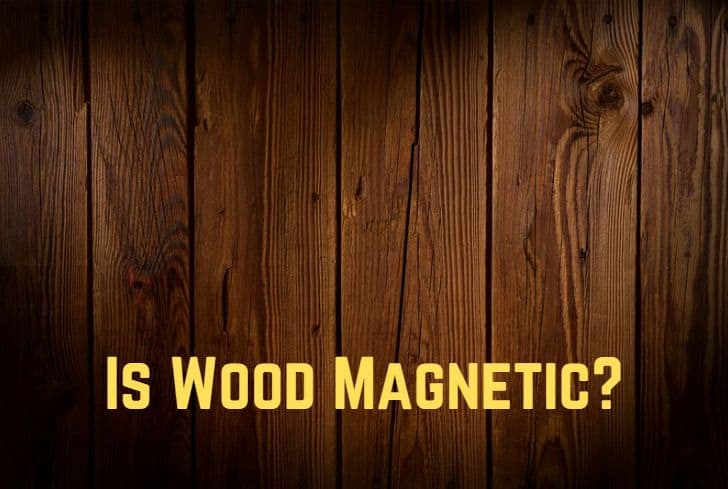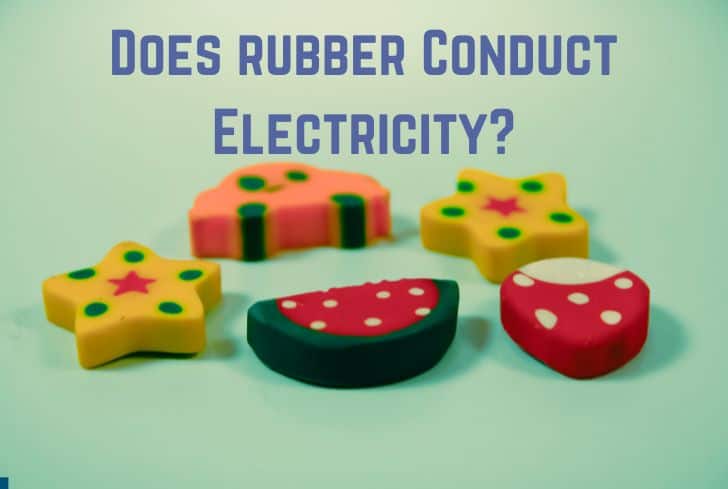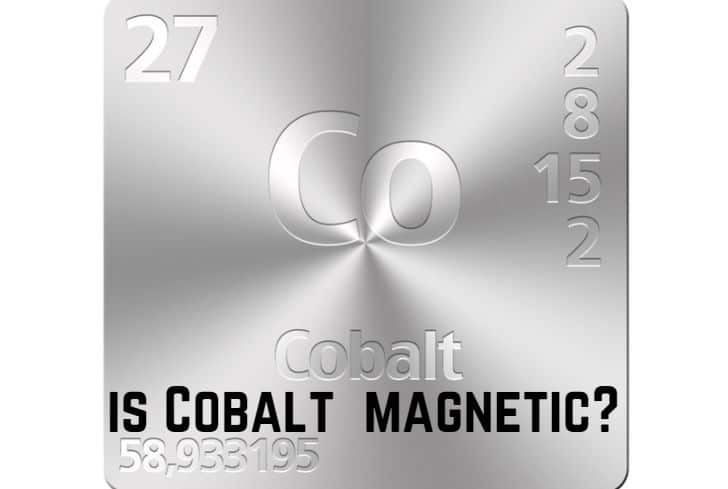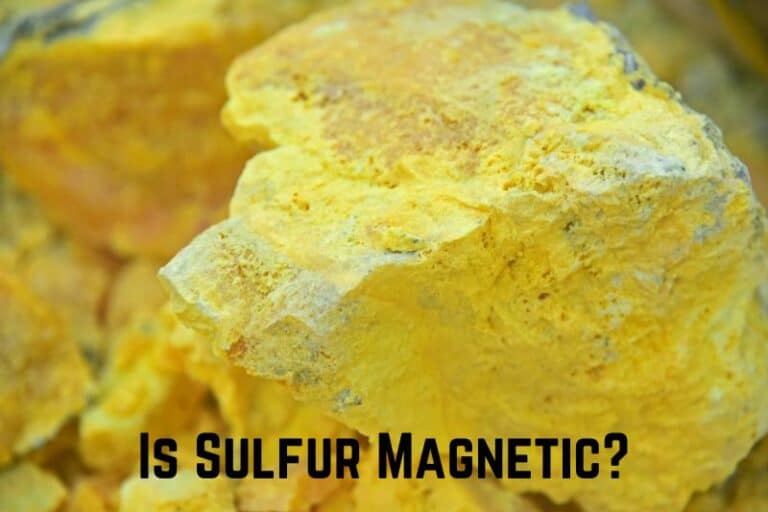Is Wood Magnetic? (No Way)

All of us, in our childhood, have likely had fun playing with fridge magnets. We would try to bring paperclips, nails, or any other thing, and see how they react around a magnet. Magnetism plays a crucial role in our world, and it is employed in a wide range of appliances: from the tiny earphones of your phone to huge cranes that lift heavy metal.
Have you ever wondered about the magnetic properties of wood? In this article, we are going to discuss just that. We will begin with an introduction to magnetism and learn what makes an object magnetic. Then we will talk about this with reference to wood. Finally, we will look at the relationship between electric current and magnetism.
Read: Does Rubber Conduct Electricity? (Is Rubber an Insulator?)
Does a Magnet Stick on Wood?
No, a magnet does not stick on wood because it is a diamagnetic object. Diamagnetic objects, such as water, wood, and most organic molecules, are repulsed by a magnetic field. This is due to them having no unpaired electrons; when placed in an electric field, the direction of their induced magnetism is opposite to that of the magnet.
Let us first try to learn what magnetism is. Magnetism is a force caused by the motion of electric charges. Every substance is made up of tiny units known as atoms. These atoms have electrons (particles that carry an electric charge) that circle the atom’s centre, called the nucleus.
In most substances, equal numbers of electrons spin in opposite directions. This cancels out their magnetism, and so they are said to be weakly magnetic. These include things like paper, cloth, wood, etc. Wood does not stick to a magnet because it is a diamagnetic object.
However, in some substances like iron, the electrons spin in the same direction. This allows their magnetic fields to combine together and produces a magnetic field extending beyond the atoms. These objects are strongly magnetic.
Why is Wood Non-magnetic?
Wood is not magnetic because, being a diamagnetic object, it does not have unpaired electrons. As such, when it is placed in a magnetic field, the direction of its induced magnetism is opposite to that of the iron. So, there is a repulsive force.
Diamagnetic objects are those that do not have unpaired electrons and are not attracted to a magnetic field. Diamagnetism is a property found in all materials, but an object is called diamagnetic when this property is the only contribution to its magnetism.
Substances like iron are also diamagnetic. But their weak diamagnetic forces are overcome by the attractive force of magnetic dipoles.
Anton Brugmans discovered diamagnetism in 1778 when he saw that bismuth was repelled by magnetic fields. It is a property seen in wood, water, copper, gold, and superconductors. Most living organisms are diamagnetic.
In most cases, diamagnetism is so weak that it can only be detected by special instruments. That is why, when you bring a magnet near a piece of wood, you won’t actually see it get repelled—the repelling force is too weak.
The diamagnetism force of superconductors, however, is strong enough to be seen. It can be used to make objects seemingly levitate.
Can Magnets Work Through the Wood?
Yes, magnets can work through the wood. Magnetic fields can penetrate aluminium, wood, and even plastic. However, the magnetic field will get weaker. The magnetic force of a magnet is strongest near the poles, so a greater distance will mean lesser exertion.
A field is an area where an object experiences a force. For example, if you drop an object, it will fall on the ground because we are all in the gravitational field of the earth, which exerts its force upon us all.
Similarly, a magnetic object has a magnetic field. The more powerful the magnet is, the stronger the magnetic field will be. Strong magnets can penetrate through objects like plastic, wood, aluminium, etc. to exert their magnetic force.
If you have seen Breaking Bad, you might have come across the episode in which they use an incredibly powerful magnet in a van, parked outside a police station, to destroy evidence. There are many debates about the scientific validity of the scene, and while its magnitude might have been exaggerated, the phenomenon (magnetism passing through objects) in itself is correct.

What Kind of Metals is Magnetic?
Depending on their internal structure, metals can be classified as ferromagnetic, paramagnetic, and diamagnetic. Ferromagnetic metals like iron and nickel are strongly magnetic, while paramagnetic metals are weakly magnetic. Diamagnetic materials are repulsed (usually unnoticeably) when placed near magnets.
Some of the ferromagnetic metals are:
- Iron: Iron is the most well-known and strongest ferromagnetic metal. It is abundant in the earth’s core and imparts magnetic properties to the planet. Earth acts as a permanent magnet; its magnetic field is what allows us to use compasses for direction.
- Nickel: Nickel is another popular ferromagnetic metal, and its compounds are also present in the earth’s core. Nickel is used to make coins, batteries, kitchen tools, etc. A large portion of it also goes into the manufacture of ferronickel for stainless steel.
- Cobalt: Cobalt can be used to produce both soft and hard magnets. Its excellent magnetic properties have been used to create a wide range of applications. Cobalt’s soft magnets have a high saturation point, so they can be used for high-temperature applications.
- Steel: Steel is mostly derived from iron. For example, EN C15D contains over 98% iron, so it also imbibes the ferromagnetic properties of iron. Steel can also be made into permanent magnets.
- Stainless Steel: An alloy steel becomes stainless steel if it has at least 10.5% chromium in it. Some stainless steels are magnetic, some are not. It depends on their chemical composition.
Read: Does Sulfuric Acid Conduct Electricity?
Various Other non-magnetic Materials
While metals like iron & nickel are magnetic, there are several other materials that are non-magnetic. These materials do not have unpaired electrons, so the effect of their electrons’ spin is cancelled out. Therefore, they are not attracted by a magnet.
These include metals like:
- Aluminium
- Gold
- Silver
Besides these, other diamagnetic materials include water, wood, and superconductors. Most organic molecules are also diamagnetic, and so is NH3.
Can Wood be Recycled Many Times?
Yes, wood can often be recycled, depending on its composition. Woods that have been chemically treated or are soiled should not be considered for recycling. Other than that, you can recycle your wood in several ways.
Instead of throwing away your scrap wood, you can reuse them to in creative ways, such as turning them into a cabinet or a table. Waste wood can also be used as raw material in the plywood industry.
There are several benefits of wood recycling. It reduces the physical space otherwise consumed by wood in landfill spaces. Most recycled wood is also stronger than new wood because its moisture content is almost zero due to long use. And of course, recycling wood is good for the environment.
Does Magnet Conduct Electricity?
The ability of a magnet to conduct electricity depends on its composition. Other than that, all magnets can be used to produce electricity. It works the other way around too: electricity can also create magnetism. We see both these processes being used in a wide range of applications, from generators to magnetic cranes.
Ferromagnetic metals like iron, nickel, and cobalt will all conduct electricity. However, ferrite magnets will not. There is no simple relationship between magnetism and electricity conduction. For example, copper is not magnetic but is a great conductor.
Other than that, magnetism can create electricity and vice versa. Magnetic fields push and pull electrons. Moving a magnet around a coil of copper/aluminium wire (these have electrons that are loosely held) pushes the electrons in the wire and creates an electric current.
In other words, kinetic energy (motion of electrons) is turned into electrical energy—that’s how electric generators work. Electric current can also be used to create magnetism, as it was discovered in 1820 by Oersted.
Electromagnets are magnets that produce magnetic fields when an electric current passes through them. Motors, headphones, relays, all use electromagnets. These provide the ability to turn magnetism on or off at the switch of a button, making them very useful. The huge cranes used to pick up metal scrap also use electromagnetism.
What Happens if You Cut a Magnet in Half?
Magnets always have two poles. If you cut a magnet in half, each of the halves will now have a north pole and a south pole of their own. Magnets cannot be monopole; so a new north pole and a new south pole will be formed at the edges where you cut.
The north pole and south pole of a magnet depends on the shape of the magnet. For a bar magnet, these will the opposing ends of the bar. In a u-shaped or horse-shoe magnet, these will be the pointed ends. A disc magnet is like a coin, having opposite poles on opposite faces.
You can find out the north pole and south pole of a magnet by bringing a magnetic compass near it. Check out this video by QM Oxford to see what happens when you cut a magnet in half.
Read: Does Copper Conduct Electricity?
Conclusion
In this article, we have looked at the magnetic properties of magnetic. Wood is a diamagnetic material; it does not have unpaired electrons so it will not be attracted by a magnet. We also looked at different kinds of magnetic and non-magnetic materials. Finally, we talked about the relationship between electricity and magnetism.






